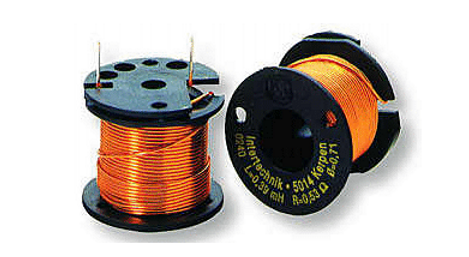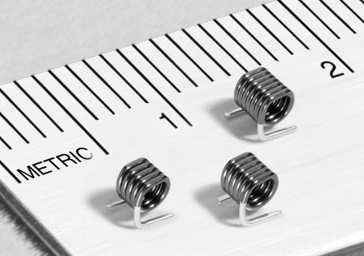air-core coil
The name air core coil comes from the fact that such a coil has no ferromagnetic core. It is a coil which is wound on a solid non-magnetic coil former and whose magnetic field lines inside the coil are transmitted by air.
The coil former of the air core coil only supports the mechanical coil structure so that the coil windings are fixed. Since they operate without ferromagnetic material, they do not exhibit saturation. The inductance of an air core coil is proportional to the square of the number of turns (N). Furthermore, the impedance of air core coils increases linearly with frequency over a wide frequency range. The quality factor (Q) is relatively high, ranging from 50 to over 200.
A disadvantage of the air core coil is that it has parasitic capacitances, which form an oscillating circuit in conjunction with the inductance. The resulting resonant frequencies can be in a wide frequency range between about 100 MHz and 1.5 GHz. To ensure that the natural resonance of the air coil does not have a negative effect on the circuit, they must be operated below their resonant frequency.
In terms of design, air coils can be cylindrical coils consisting of a spirally wound coil wire, but they can also be flat coils in which all coil windings lie in one plane.
Air coils are used in high-frequency technology, in antenna and RF receiver circuits, in low- loss oscillating circuits, but also in RFID transmission.


